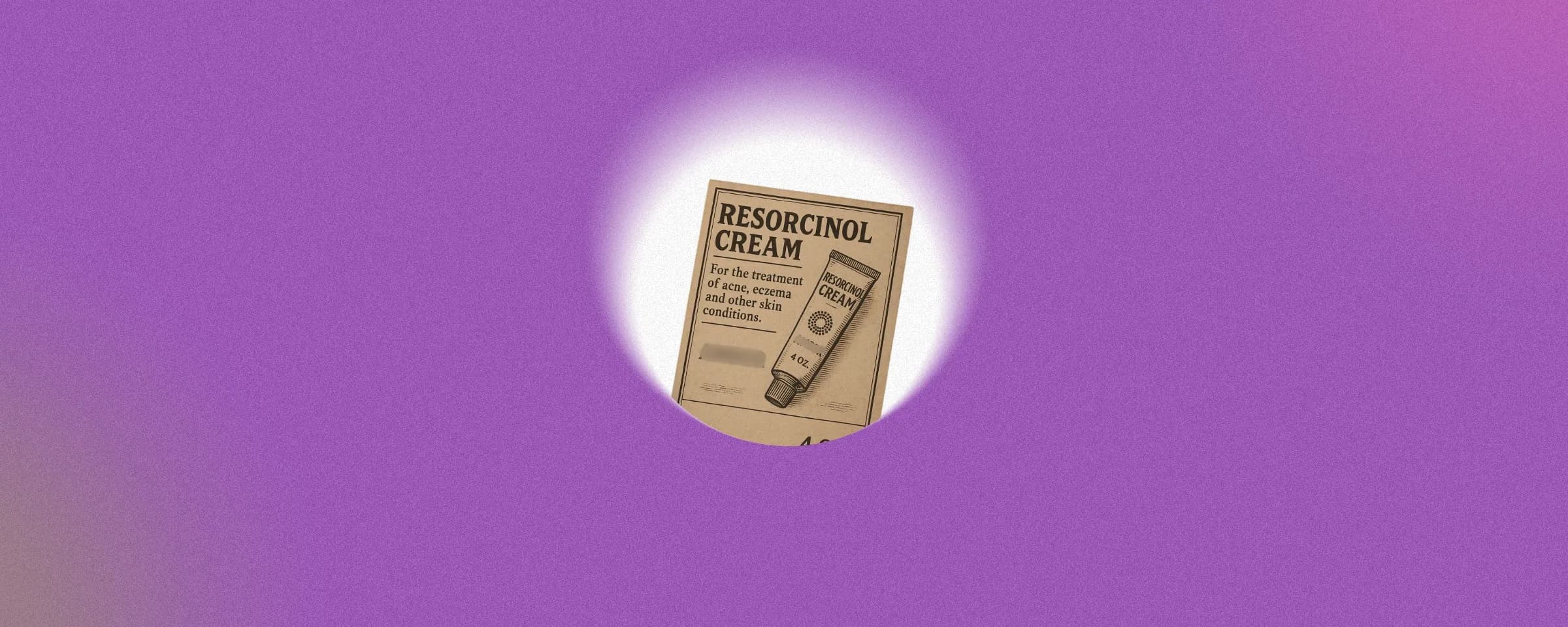Home
Blogs
Wellness Corner
Terbinafine Hydrochloride Cream and Ointment: An Essential Guide to Antifungal Treatment
Terbinafine Hydrochloride Cream and Ointment: An Essential Guide to Antifungal Treatment

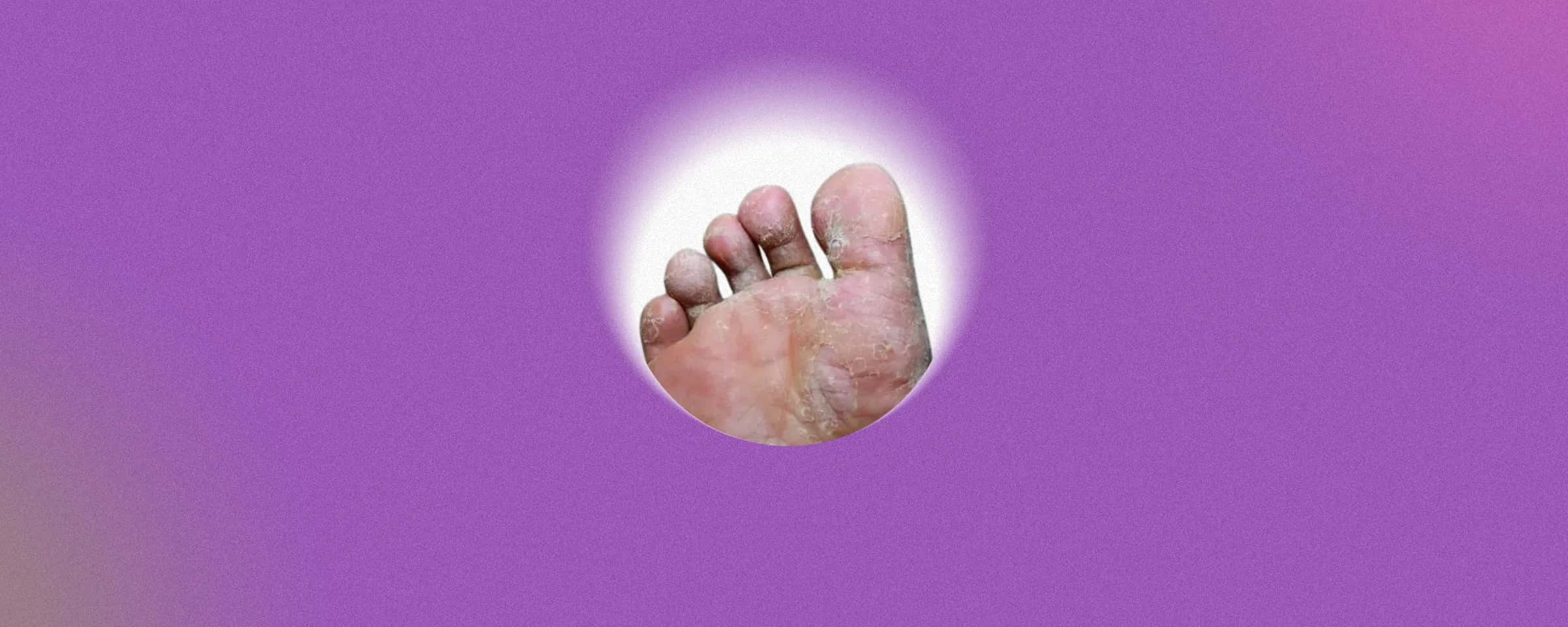
Introduction
Fungal skin infections such as athlete’s foot and ringworm are common in India and many other countries due to humid climates and close contact in crowded settings. Terbinafine hydrochloride is a widely used antifungal medicine, available in forms such as creams, ointments, lotions and sprays.
This article outlines its uses, application guidelines, possible effects, costs and a comparison of popular brands like Lamisil and Terbinaforce.
What Is Terbinafine Hydrochloride and How Does It Work?
Terbinafine hydrochloride is an antifungal drug that falls in the allylamine group. Its mechanism of action involves inhibition of the enzyme squalene epoxidase, which plays a role in fungal cell wall formation. In the absence of this protective layer, fungi are unable to survive.
Terbinafine is fungicidal as compared to some types of antifungal medications that just suppress fungal growth. This makes terbinafine ointment very useful in the absorption of the dermatophytes, or the fungi that have caused ringworm, jock itch, and athlete's foot.
Common Uses of Terbinafine Cream and Ointment
The terbinafine hydrochloride cream uses extend to a wide range of fungal skin infections. Doctors recommend it for:
- Tinea corporis (ringworm): circular, itchy patches on arms, legs, or torso.
- Tinea cruris (jock itch): rashes in the groin and inner thighs.
- Tinea pedis (athlete’s foot): fungal infection between the toes and soles.
- Tinea manuum: fungal infections of the hands.
- Tinea versicolor: discoloured skin patches caused by Malassezia fungi.
- Cutaneous candidiasis: yeast infections of the skin folds.
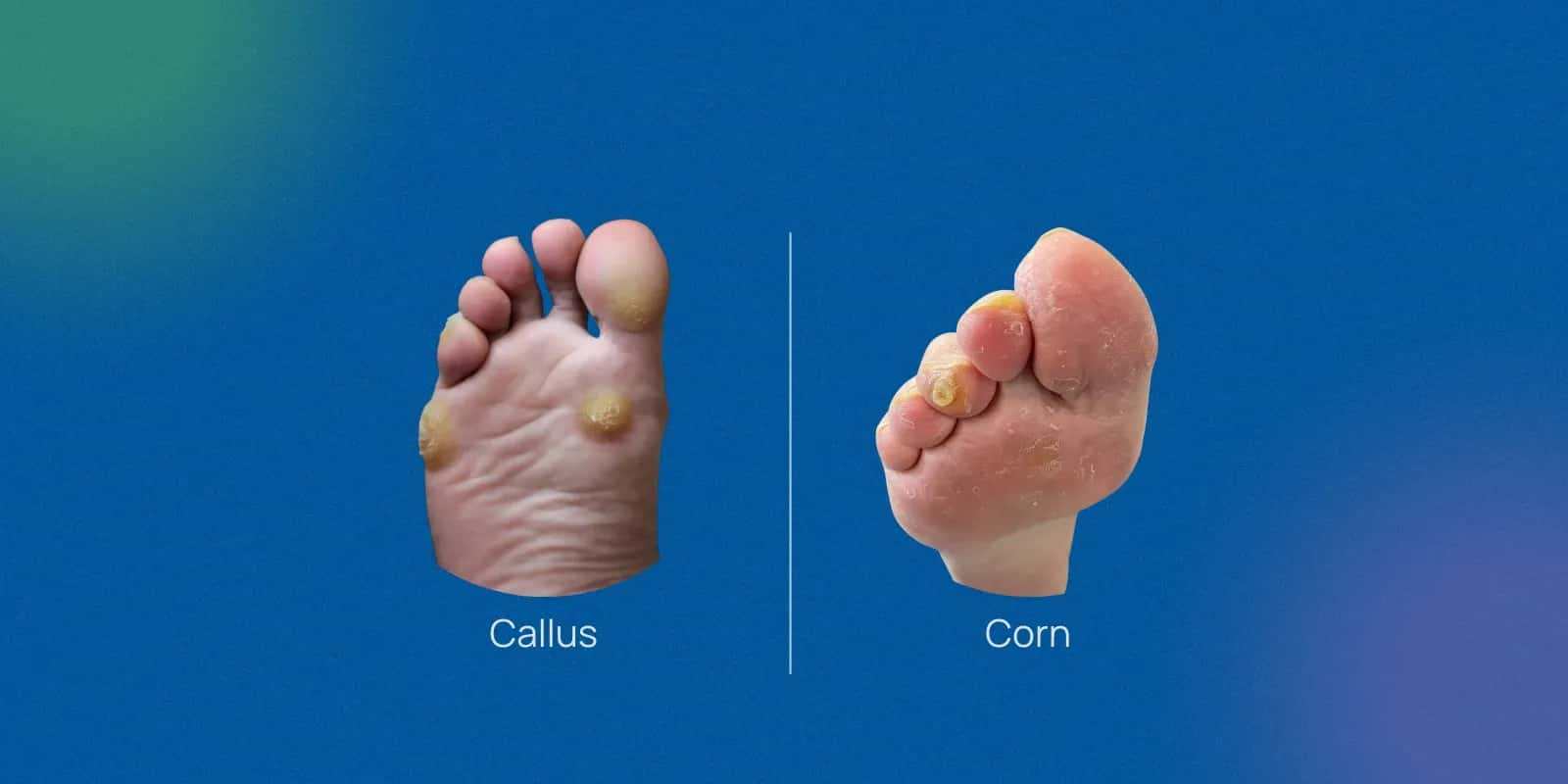
Available Topical Forms: Creams, Ointments, Lotions, and Sprays
Patients can choose among several topical formats depending on their needs:
- Creams: The most common form, spreads easily and suits most skin infections.
- Ointments: Thicker, greasier, and ideal for dry, scaly lesions. Popularly sold as ointment, terbinafine or terbinaforce ointment in India.
-
Lotions: Lighter consistency, good for hairy areas like the scalp. Marketed as terbinafine lotion.
-
Sprays: Convenient for athletes or patients needing wider coverage, especially for recurrent athlete’s foot.
The choice of formulation depends on the infection site and patient comfort. For example, ointments suit dry, cracked skin, while lotions are better for larger or hairy areas.
How to Apply Terbinafine Cream and Ointment Safely and Effectively
For best results, follow these steps when using terbinafine hydrochloride cream or ointment:
-
Wash and dry the infected area thoroughly before application.
-
Apply a thin layer of cream or ointment once or twice daily as directed.
-
Cover slightly beyond the affected skin to prevent fungal spread.
-
Wash your hands after application to avoid contamination.
-
Continue treatment for the prescribed duration, even if symptoms improve early.
Stopping treatment early may cause the infection to return but good hygiene, breathable clothing and terbinafine use can speed recovery.
Dosage and Duration of Treatment with Terbinafine Topicals
Topical therapy is usually prescribed for one to two weeks for most skin infections. However, more resistant fungal infections, like onychomycosis (nail fungus), may require oral tablets.
- Topical dose: Apply once or twice daily, depending on severity.
- Oral dose: For severe infections, doctors may prescribe terbinafine 500 mg daily for several weeks, always under medical supervision due to possible side effects.
It is important to ensure this treatment course is adhered to till the end because less treatment might lead to recurrence.
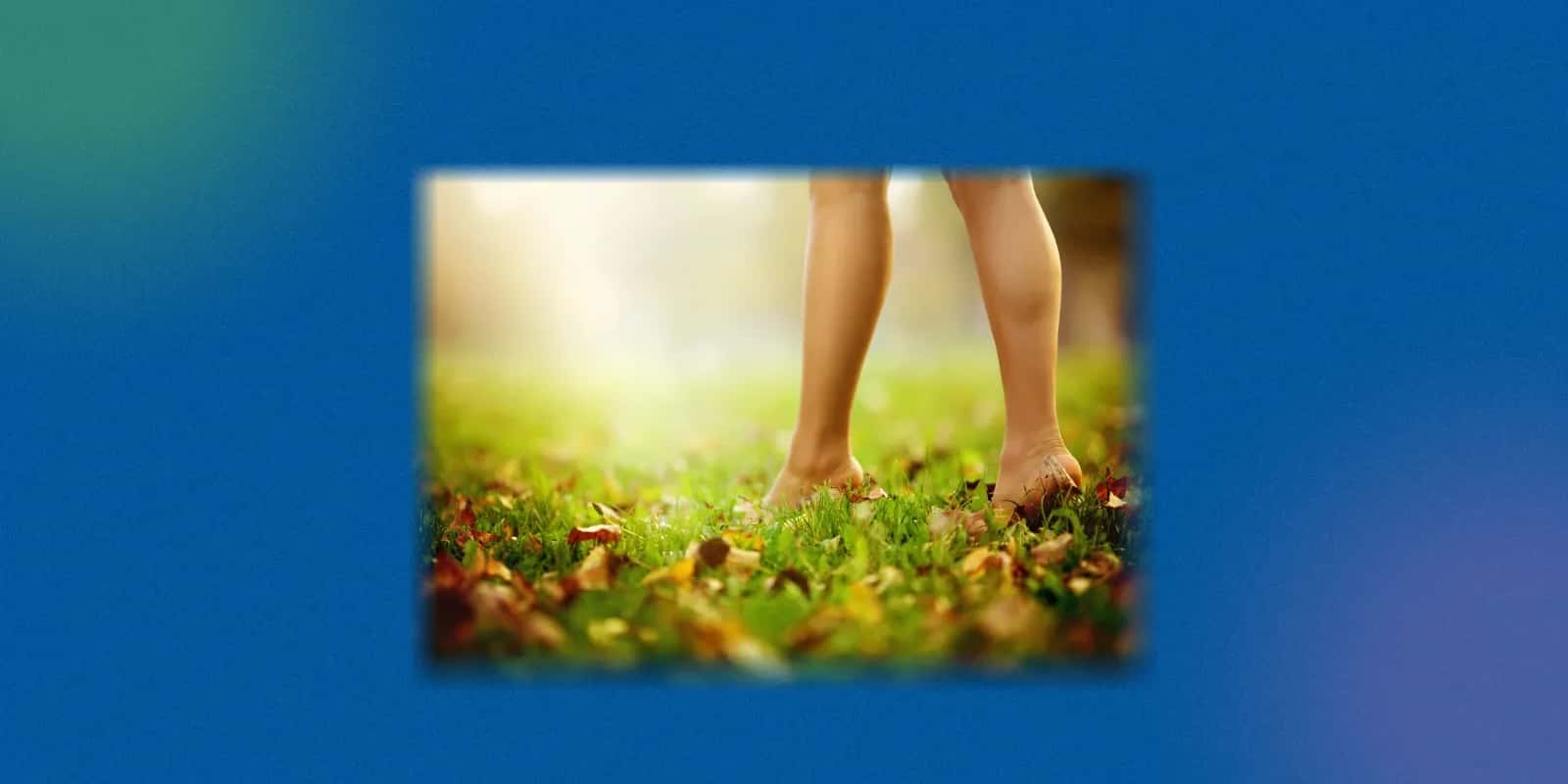
Side Effects and Safety Considerations of Terbinafine Cream
Topical terbinafine is generally safe and well-tolerated. Still, patients may occasionally experience:
- Mild skin irritation, redness, or itching.
- Burning sensation at the application site.
- Dryness or flaking of skin.
Serious allergies are rare, but rashes, swelling, or breathing issues require medical help. Topical terbinafine is safer long-term than oral forms since it does not affect the liver.
Terbinafine Plus Cream: Combination Benefits and Uses
Terbinafine plus cream. Terbinafine mixed with other drugs, like steroids or antibacterial medicines, is prescribed to some patients. The benefits include:
-
Faster relief from itching and redness.
-
Broader protection when a mixed infection is suspected.
-
Greater compliance due to multi-action formulation.
Steroid combinations can worsen fungal resistance, so terbinafine cream should be used only as directed by a dermatologist.
Price Guide: Lamisil Cream and Terbinaforce Ointment
Cost is a significant factor in treatment choices, especially in India.
-
Lamisil is a well-known international brand. The Lamisil cream price and Lamisil ointment price are usually higher than generic options, making it less affordable for some patients.
-
Terbinaforce ointment and Terbinaforce cream are popular Indian alternatives, widely available at lower costs. They offer the same antifungal action with good efficacy.
Terbinafine lotions and sprays are competitively priced, but effectiveness depends more on proper use.
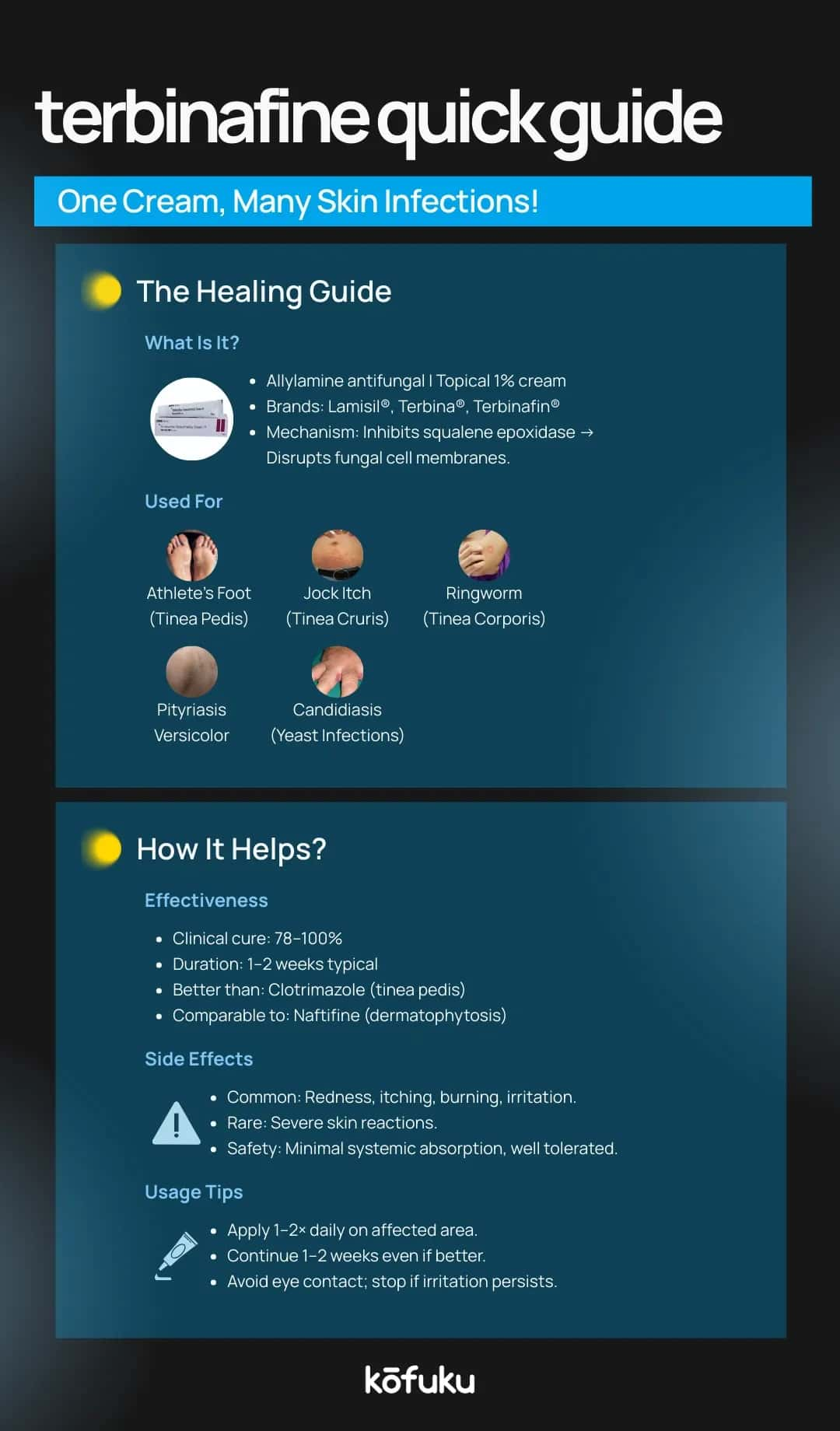
FAQs
Q. What is terbinafine hydrochloride cream?
A. Terbinafine hydrochloride cream treats fungal skin infections such as ringworm, athlete’s foot, jock itch, tinea versicolor, and cutaneous candidiasis. It kills fungi, easing itching, redness, and scaling while preventing spread.
Q. How to apply terbinafine ointment for ringworm?
A. Clean and dry the affected area. Apply a thin layer of terbinafine ointment once or twice daily, covering slightly beyond the infected skin. Wash hands after application and continue the full course to prevent recurrence.
Q. What is the difference between terbinafine cream and terbinaforce ointment?
A. Terbinafine cream is lighter and spreads easily, suitable for most skin infections, while terbinaforce ointment is thicker and greasier, ideal for dry, scaly patches. Both contain terbinafine as the active antifungal agent.
Q. How long should I use terbinafine cream for fungal infections?
A. For most skin infections, apply terbinafine cream once or twice daily for 1–2 weeks. Severe infections may require longer use. Continue treatment even if symptoms improve to avoid fungal recurrence.
Q. What are the common side effects of terbinafine cream?
A. Terbinafine cream may cause mild irritation, redness or dryness. Severe allergic reactions are rare but need urgent medical care.
Q. Does terbinafine plus cream contain steroids?
A. Some terbinafine plus cream formulations combine terbinafine with mild corticosteroids to reduce inflammation and itching. Not all products contain steroids; always check the label or consult a doctor before use.
Q. What is the price of Lamisil cream and terbinafine ointment?
A. Lamisil is priced higher as an international brand, while Terbinaforce is a more affordable generic in India with similar effectiveness. Costs vary by pharmacy and pack size.
Q. Can I use terbinafine lotion on sensitive skin areas?
A. Terbinafine lotion is lighter and suitable for hairy or sensitive skin areas. Apply cautiously, avoid the eyes and mucous membranes, and follow medical guidance to prevent irritation.
Q. Is terbinafine effective for athlete’s foot and jock itch?
A. Yes, terbinafine is highly effective against athlete’s foot and jock itch, killing the causative fungi, reducing itching, redness, and scaling, and helping prevent reinfection when used as directed.
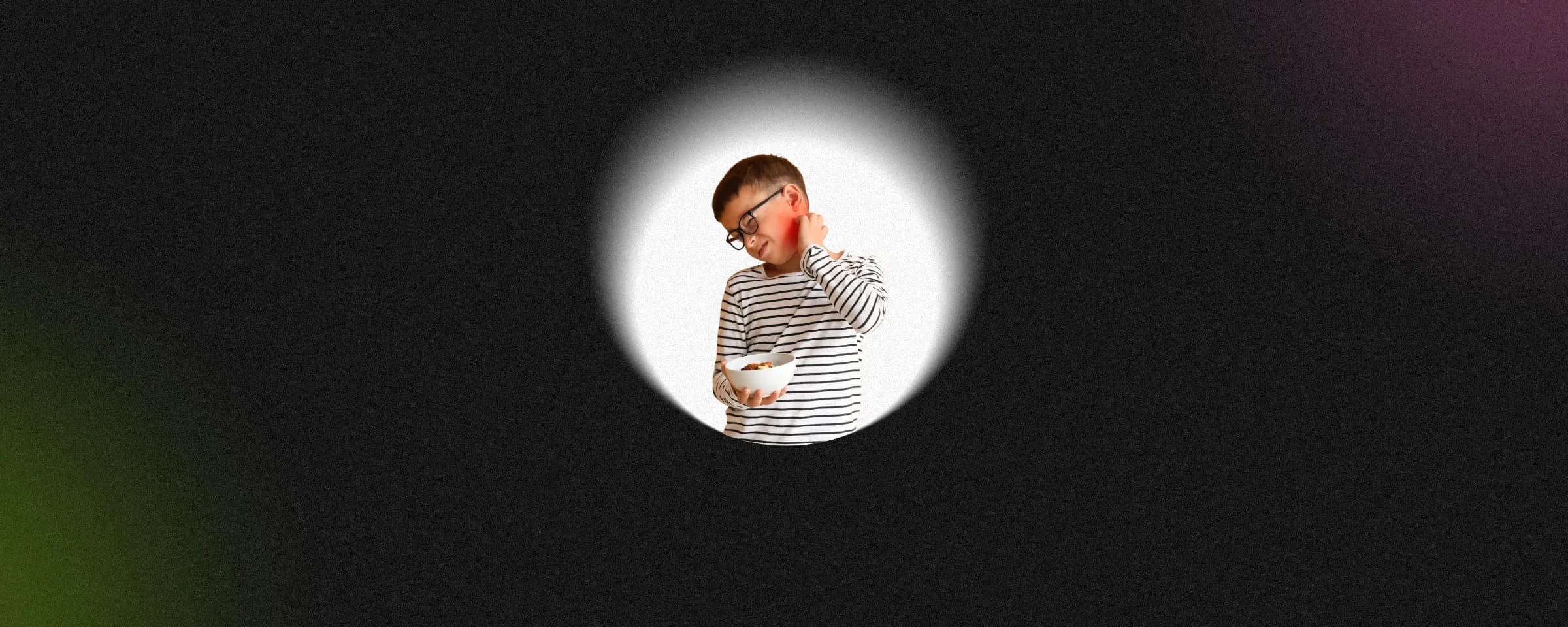
Tests for Food Allergies: Why Getting the Right Diagnosis Matters

10 Skin Diseases You Should Know About
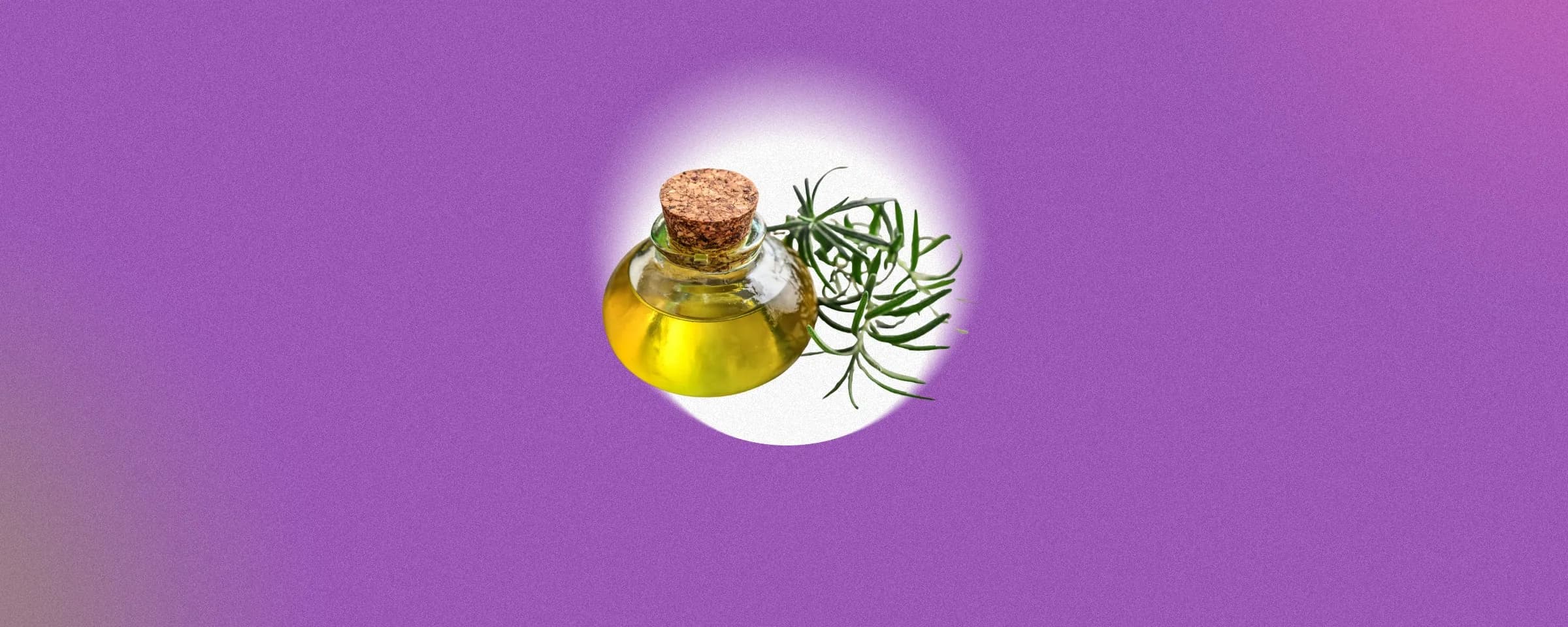
Eight Powerful Rosemary Essential Oil Benefits for Hair, Skin & Health

Does Skin Cancer Always Mean Having Melanoma?
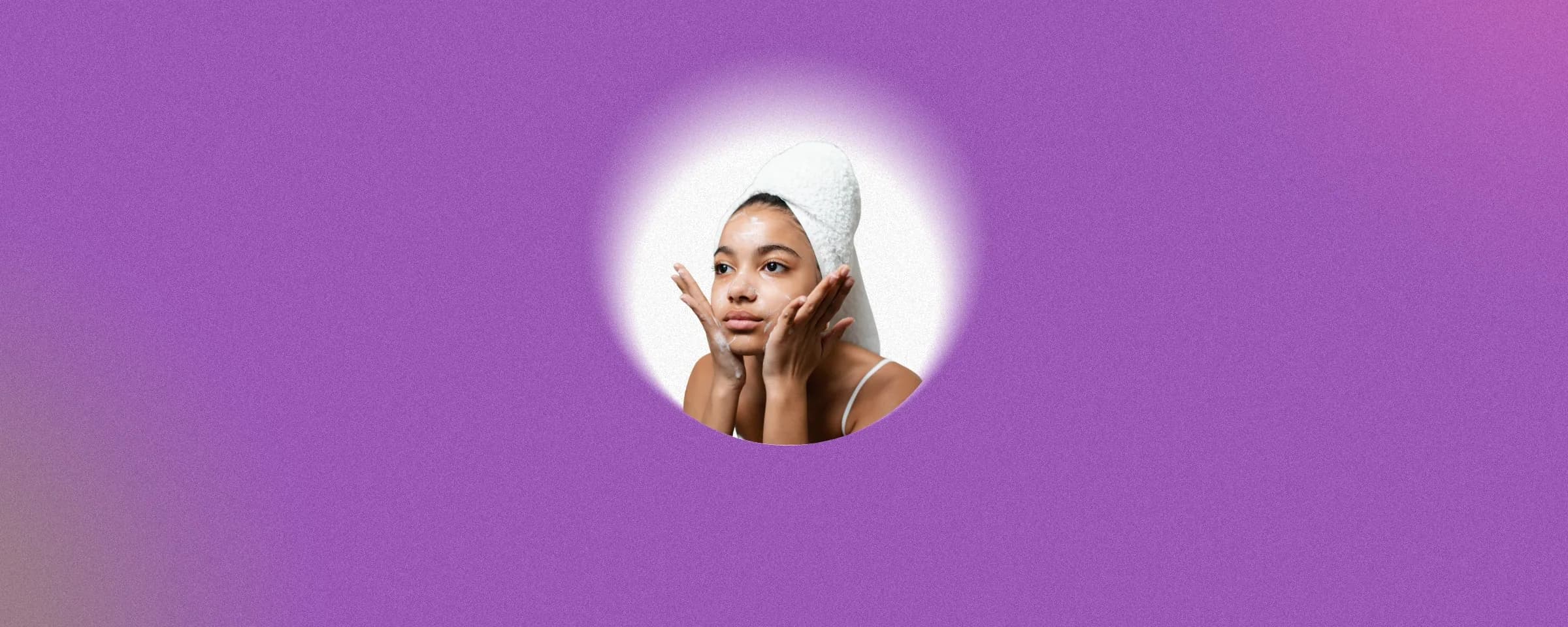
Kojic Acid: How It Works as a Soap, Cream & Serum for Even Skin Tone
